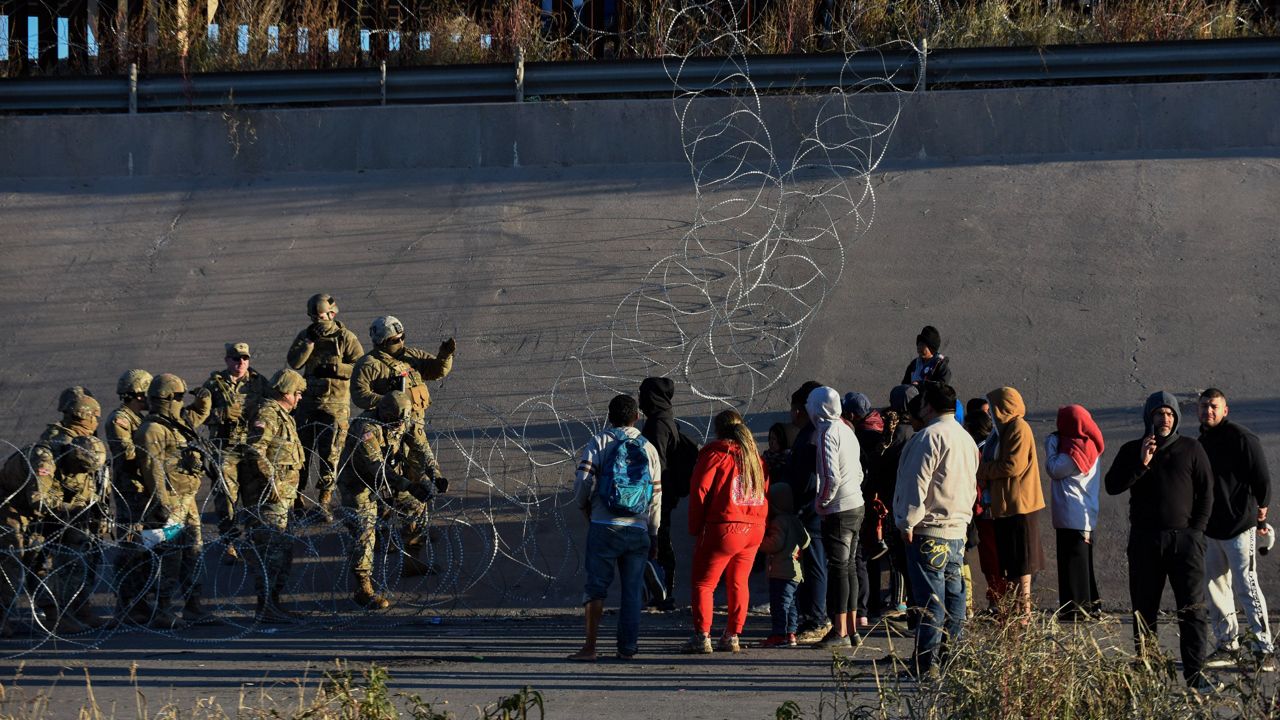EL PASO, Texas — As asylum seekers continue to make their way to the U.S.-Mexico border in record numbers, the Texas National Guard is expanding a barbwire fence in the El Paso area.
According to a report from CNN, the fencing has been extended to about two miles since the project got underway last week. It spans two ports of entry and prohibits migrants from walking through ankle-deep Rio Grande water to reach Border Patrol agents in the area.
A Border Report story claims the fencing has caused illegal border crossings near El Paso to drop dramatically, something Texas Gov. Greg Abbott touted in a tweet.
“Migrant crossings ‘plummet’ in El Paso as Texas National Guard expands barbwire fence,” Abbott wrote. “We will continue to deploy the National Guard, razor wire, large container boxes and building the wall to do all we can to deter illegal immigration caused by Biden.”
Besides the fencing, according to Border Report, nine shipping containers were placed on the banks of the Rio Grande, though where they will ultimately be located is not known.
El Paso Mayor Oscar Leeser on Dec. 18 declared a state of emergency over concerns about the city’s ability to handle the influx of migrants.
On Tuesday, the U.S. Supreme Court issued a ruling keeping Title 42 in place indefinitely. The COVID-19 pandemic public health policy allows law enforcement to send migrants back to Mexico without an asylum hearing.
It had been scheduled to expire on Dec. 21.
The limits were put in place under then-President Donald Trump at the beginning of the pandemic, but unwinding it has taken a torturous route through the courts.
The U.S. Centers for Disease Control and Prevention attempted to end the policy in April 2022, but a federal judge in Louisiana sided with 19 Republican-led states in May to order it kept in place. Another federal judge in Washington said in November that Title 42 must end, sending the dispute to the Supreme Court.
Officials have expelled asylum seekers inside the United States 2.5 million times on grounds of preventing the spread of COVID-19.
The Associated Press contributed to this report.



